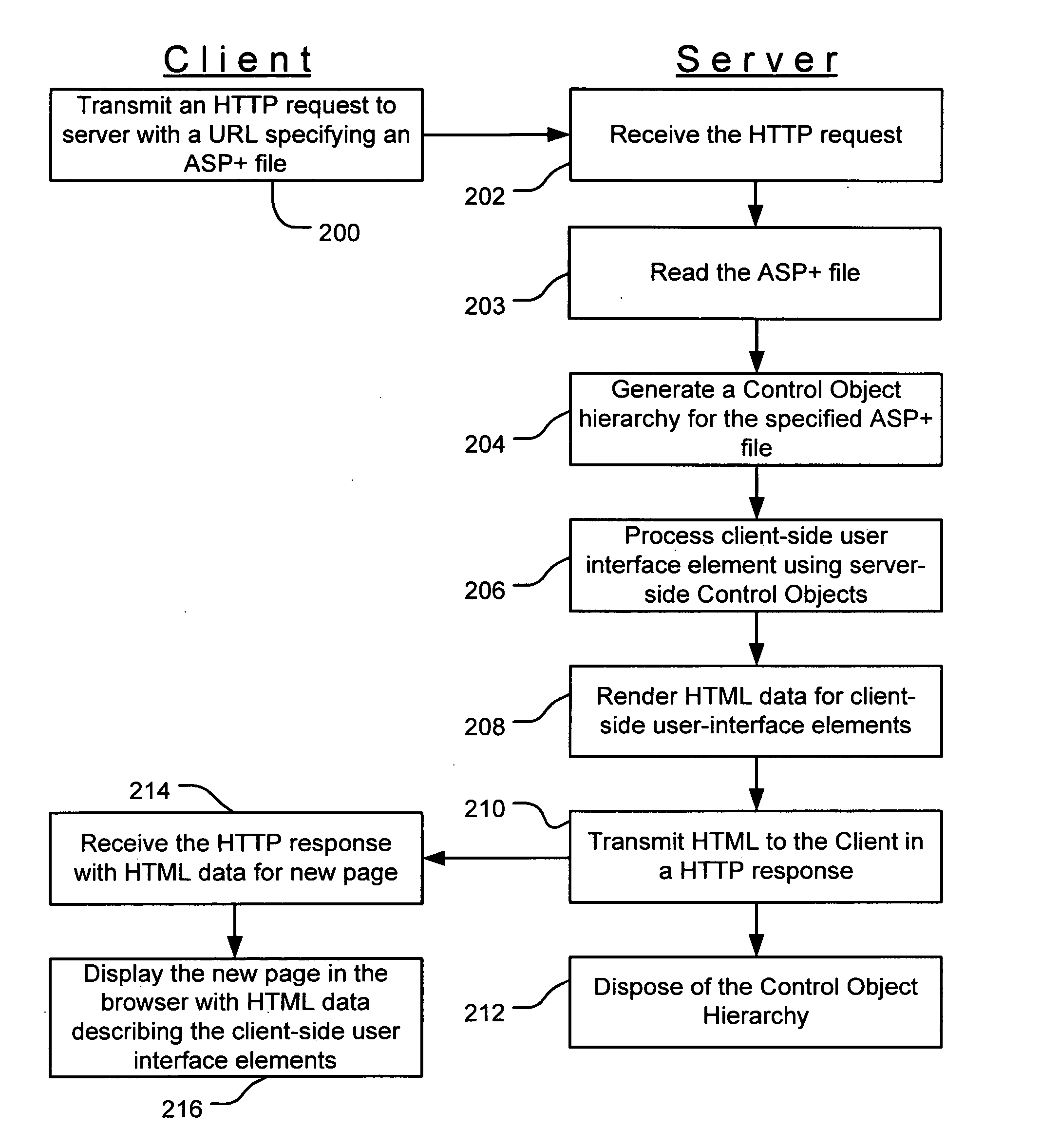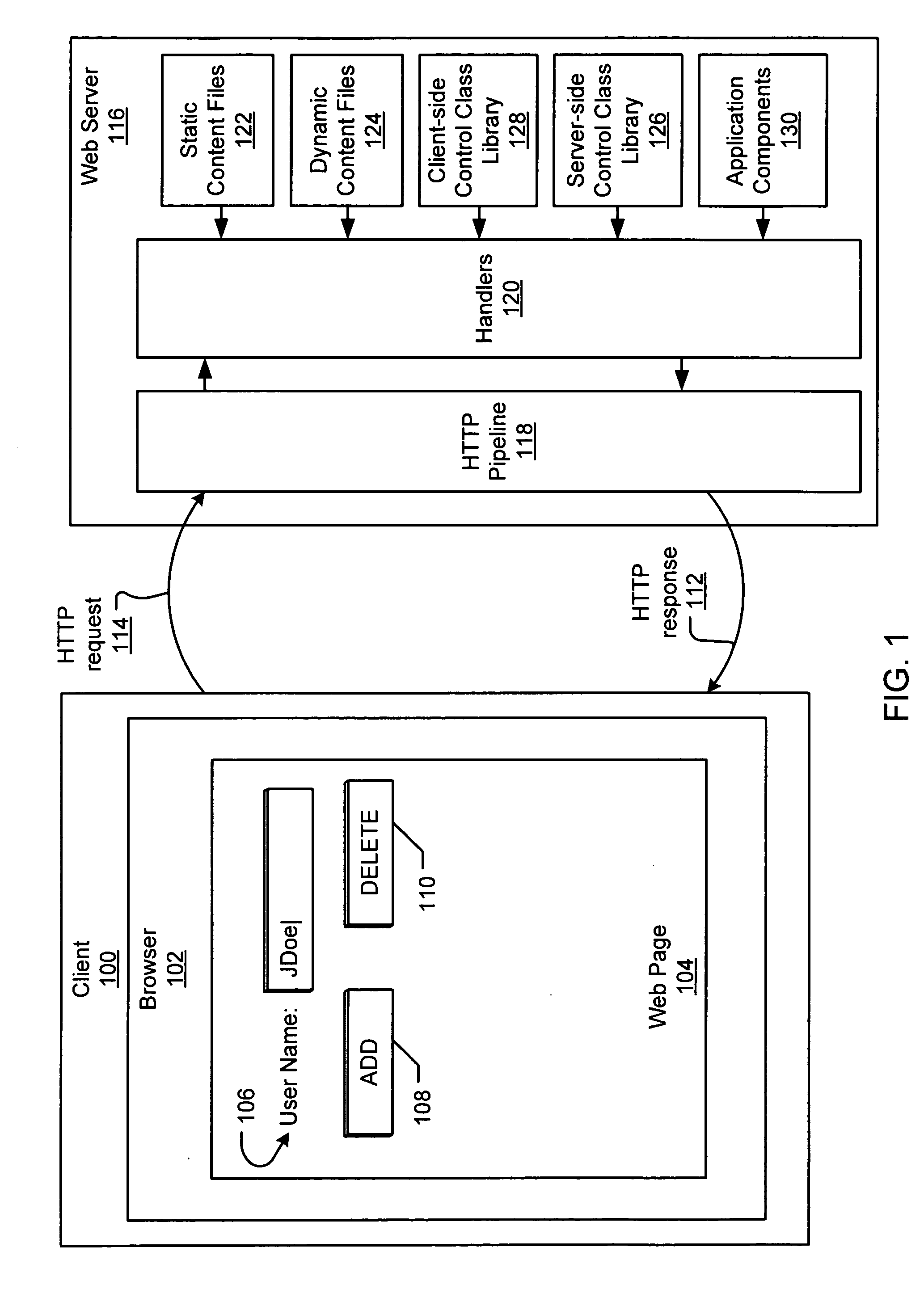Server-side control objects for processing client-side user interface elements
a control object and client-side technology, applied in the field of server-side control objects, can solve the problems of complex task of developing a server-side application program, inability to create the required number of static web pages, and static file that does not inherently support dynamic generation of web page content, so as to minimize the custom event handling
- Summary
- Abstract
- Description
- Claims
- Application Information
AI Technical Summary
Benefits of technology
Problems solved by technology
Method used
Image
Examples
Embodiment Construction
An embodiment of the present invention includes a server-side control object for processing and generating a client-side user interface element for display on a web page. Furthermore, a hierarchy of server-side control objects can cooperate to generate the resulting authoring language code, such as standard HTML, for display of a web page on a client. The client can be, for example, any browser that supports standard HTML or another authoring language. In an embodiment of the present invention, server-side control objects logically correspond to client-side user interface elements and generate at a server the authoring language code to be used by a client-side browser to display and process a web page. The operation of processing the client-side user interface element may include one or more of a postback event handling operation, a postback data handling operation, a data binding operation, and a state management operation. The state management operation relates to the state of a ...
PUM
 Login to View More
Login to View More Abstract
Description
Claims
Application Information
 Login to View More
Login to View More - R&D
- Intellectual Property
- Life Sciences
- Materials
- Tech Scout
- Unparalleled Data Quality
- Higher Quality Content
- 60% Fewer Hallucinations
Browse by: Latest US Patents, China's latest patents, Technical Efficacy Thesaurus, Application Domain, Technology Topic, Popular Technical Reports.
© 2025 PatSnap. All rights reserved.Legal|Privacy policy|Modern Slavery Act Transparency Statement|Sitemap|About US| Contact US: help@patsnap.com



